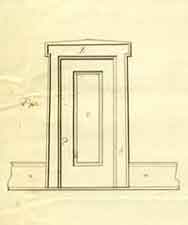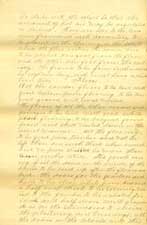|
1849: A Commodious House
1855: Early Obstacles
1865-1875: A Period of Rebuilding
1880-1925: The Hospital Expands
1925-1940: Continued Growth
1900: A Self-Sufficient Community
1956: From the Ashes
1937: Biggs Center for the Criminally Insane
1984: End of the Farm
|
 |

Although new, three flaws in the Fulton asylum building quickly emerged. First, interior construction provided no means to segregate the "furiously insane" from calmer patients. Second, the building was too small to meet Missouri's demand. Superintendent Smith turned away seventy admissions in 1854 because of overcrowding. Third, until 1859, the poorly designed and constantly malfunctioning boiler system forced patients and staff to congregate in "stove rooms" on cold days. In addition to physical obstacles to success, Smith lamented the absence of standard medical terminology for the diagnosis of insanity, thus one doctor's notes often meant nothing to another. Finally, Smith warned that the likelihood of a cure fell dramatically when patients entered with an illness already of long duration.
". . .in order to [insure] the proper classification of patients, and the preservation of good order quietness and peace in our household, two additional wings for the most excited are absolutely essential and indispensable."
Superintendent Dr. Turner R. H. Smith
 Missouri State Archives Missouri State Archives
|
Building details for the Missouri Lunatic Asylum, Solomon Jenkins, Architect, 1849. |
Building specifications for the Missouri Lunatic Asylum, Solomon Jenkins, Architect, 1849. |

Missouri State Archives
|
|